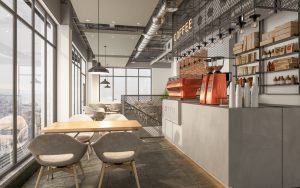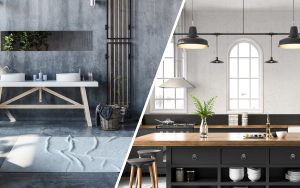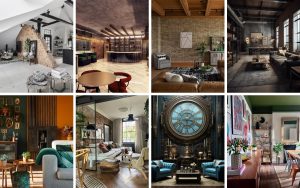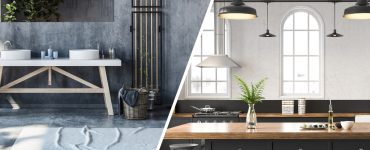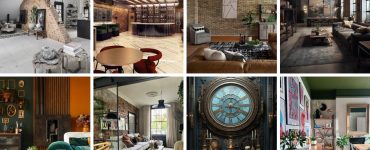In the realm of interior design, two distinct aesthetics have risen to prominence, captivating the hearts of design enthusiasts and homeowners alike. Industrial and Steampunk styles, with their unique and captivating features, have become more than just passing trends; they represent a bold and captivating departure from traditional design norms. These two styles, though distinct, share an intriguing connection that blurs the boundaries between raw, rugged industrial charm and the whimsical, imaginative world of Steampunk.
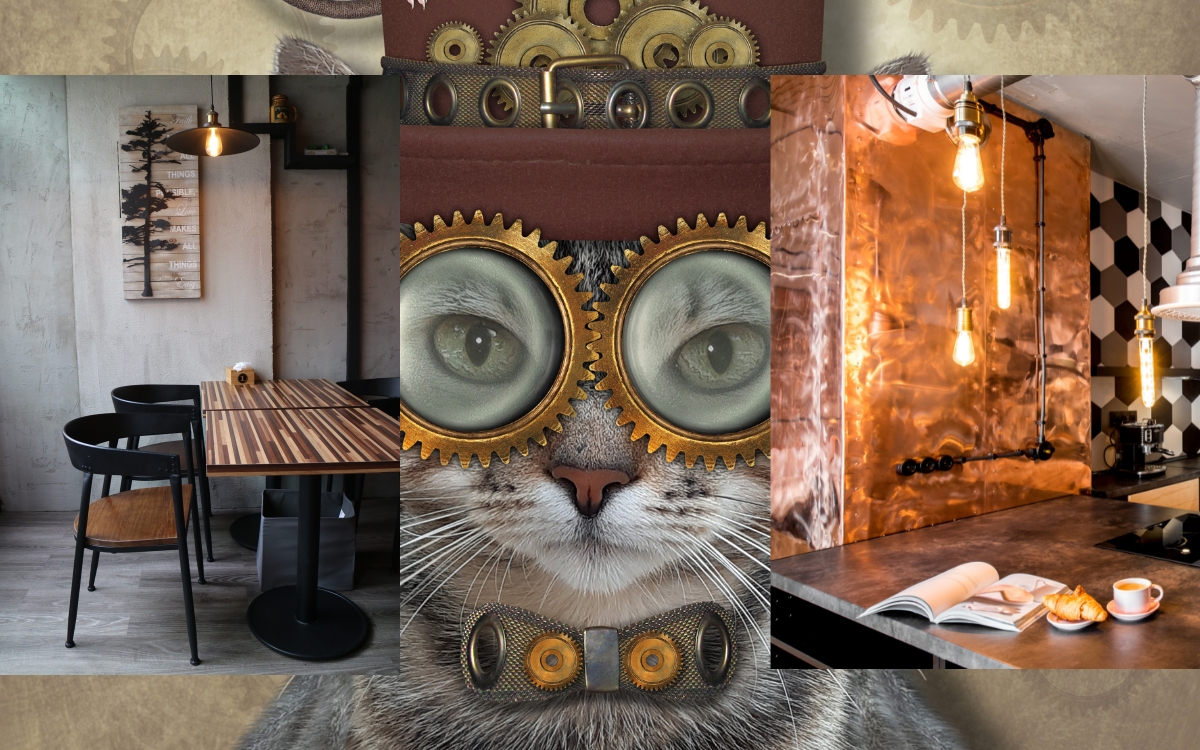
In this blog post, we embark on a journey to unravel the distinctions between Industrial and Steampunk interior design. We will explore the defining characteristics of each style, from the raw appeal of exposed brick and metal elements to the nostalgic blend of Victorian-era aesthetics with futuristic imagination. Delving into the core elements and decorative aspects that shape these styles, we aim to provide you with a comprehensive understanding of their unique charm and appeal.
Overlapping Features: Where Industrial and Steampunk Meet
Industrial and Steampunk interior design styles may appear distinct at first glance, but upon closer inspection, one can discover intriguing overlaps where these two captivating aesthetics converge. Embracing both raw industrial elements and the imaginative essence of the Steampunk movement, this fusion creates a harmonious blend that appeals to those seeking a unique and eclectic interior space.
Industrial Steampunk: A Fusion of Two Styles
In the realm where industrial meets Steampunk, an exciting fusion occurs, drawing upon the best of both worlds. This dynamic combination leverages the rugged and weathered features of industrial design while incorporating the imaginative elements inspired by Steampunk’s Victorian-era science fiction. The result is a captivating, balanced synergy that showcases the best of each style.
Finding Common Ground in Raw Materials
At the heart of both industrial and Steampunk styles lies an appreciation for raw materials. Exposed brick walls, concrete floors, and metal elements are key features in industrial design, while Steampunk often incorporates distressed wood, leather upholstery, and metallic gears. By integrating these common raw materials, a cohesive visual narrative emerges, marrying the two styles seamlessly.
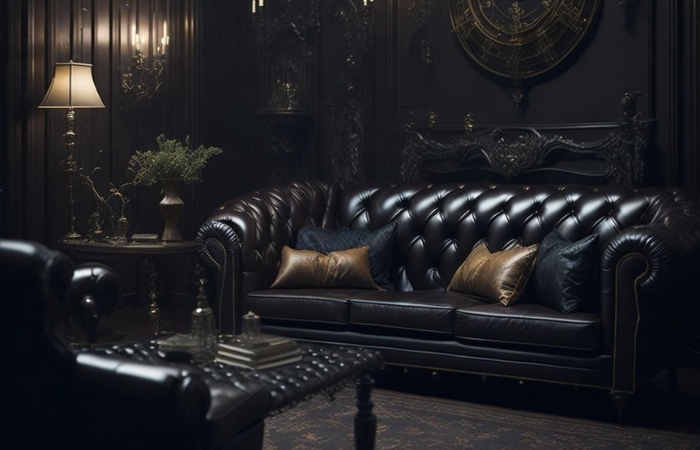
Incorporating Industrial Lighting in Steampunk Spaces
The lighting elements in both industrial and Steampunk interiors play pivotal roles in shaping the ambiance. Industrial lighting often showcases exposed Edison bulbs and metal pendants, while Steampunk lighting incorporates vintage-inspired fixtures with brass and copper finishes. By combining these distinct lighting elements, one can achieve a captivating atmosphere that exudes nostalgia and innovation.
The Power of Steampunk Accessories in Industrial Design
While industrial design typically embraces minimalism and utilitarian aesthetics, the introduction of Steampunk accessories can elevate the space to a whole new level. Steampunk’s imaginative and intricate artifacts add a touch of fantasy and creativity to the industrial environment, infusing it with character and intrigue.
Enhancing Industrial Spaces with Steampunk Artifacts
Incorporating Steampunk accessories, such as antique clocks, vintage typewriters, or elaborate brass telescopes, can transform the industrial space into a whimsical and intriguing environment. These unique pieces of artistry serve as conversation starters and lend a sense of history and wonder to the overall design.
Mixing and Matching Elements for a Unique Look
The key to successfully combining industrial and Steampunk elements lies in the art of mixing and matching. By thoughtfully layering vintage Steampunk elements onto an industrial backdrop, you can create a space that reflects your individuality and passions. It’s essential to strike a balance and avoid overwhelming the room with too many competing elements.
Blending Color Palettes: Neutral vs. Warm Tones
Color palettes significantly impact the overall mood and feel of an interior space. While industrial design tends to emphasize neutral and monochromatic tones, Steampunk often leans towards warmer, richer colors. When merging these two styles, finding a cohesive color scheme is key to achieving visual harmony.
Harmonizing Neutral Base with Warm Steampunk Accents
To bring industrial and Steampunk together harmoniously, start with a neutral base. Embrace shades of gray, black, white, and earthy tones that are characteristic of industrial design. Then, infuse warm accents in the form of rusty oranges, deep browns, and antique gold inspired by the Steampunk palette. This juxtaposition will create an inviting and visually stimulating environment.
Striking a Balance between the Two Styles
Achieving a balanced blend of industrial and Steampunk aesthetics requires careful consideration. Balance the starkness of industrial design with the whimsy of Steampunk, ensuring that neither style overpowers the other. Experiment with different elements and step back to assess the overall effect until you strike the perfect equilibrium that resonates with your taste and vision.
How to Choose Between Industrial and Steampunk Designs
Choosing between industrial and Steampunk interior designs can be a delightful yet challenging task, as both styles offer unique and captivating aesthetics. To make an informed decision that aligns with your preferences, lifestyle, and existing space, consider the following factors before embarking on your design journey.
Understanding Your Preferences and Lifestyle
Start by delving into your personal style preferences and lifestyle requirements. Consider the atmosphere you wish to create within your living space. If you admire the raw and minimalistic charm of industrial design and enjoy the simplicity it offers, it might be the ideal choice for you. On the other hand, if you are drawn to the imaginative and nostalgic elements of Steampunk, envisioning a space filled with vintage artifacts and rich colors, then this style may be the perfect fit.
Assessing Your Personal Style and Taste
Take time to explore and evaluate your personal style and taste. Look for inspiration in magazines, online platforms, or even visiting design showrooms to gather ideas and identify the elements that resonate with you the most. Whether you prefer the sleekness of industrial furnishings or the intricate detailing of Steampunk decor, understanding your design preferences will guide you towards the right direction.
Considering Practicality and Maintenance
Practicality and maintenance are crucial aspects to contemplate when choosing between industrial and Steampunk designs. Industrial design, with its exposed surfaces and minimalism, can be easier to clean and maintain, making it an excellent option for busy households. On the other hand, Steampunk’s vintage elements may require more care and attention to preserve their authenticity. Consider your lifestyle and available time for maintenance before making a decision.
Complementing Existing Architectural Elements
When deciding on a design style, it’s essential to consider the existing architectural elements in your space. Industrial design often works well with open floor plans, exposed beams, and high ceilings, making it an excellent choice for lofts or converted industrial spaces. Steampunk, with its nod to Victorian aesthetics, may blend seamlessly with older homes or spaces featuring classic architectural elements. Ensure that your chosen style complements the natural characteristics of your space, creating a cohesive and harmonious interior.
Working with Industrial-Friendly Spaces
If your space is already conducive to industrial design, embracing this style might be a natural choice. Look for features such as exposed brick walls, concrete floors, or metal beams that can effortlessly lend themselves to an industrial theme. Emphasizing these pre-existing industrial elements will help create a more authentic and cohesive look.
Adapting Steampunk in Suitable Environments
For those drawn to the Steampunk aesthetic, finding suitable environments to adapt this style can be a delightful challenge. Steampunk often thrives in spaces with warm, inviting atmospheres that evoke nostalgia and history. Vintage homes or rooms with abundant natural light can provide an ideal backdrop for incorporating Steampunk elements. Consider how the Steampunk aesthetic can seamlessly fit into your space, ensuring a cohesive and captivating design.
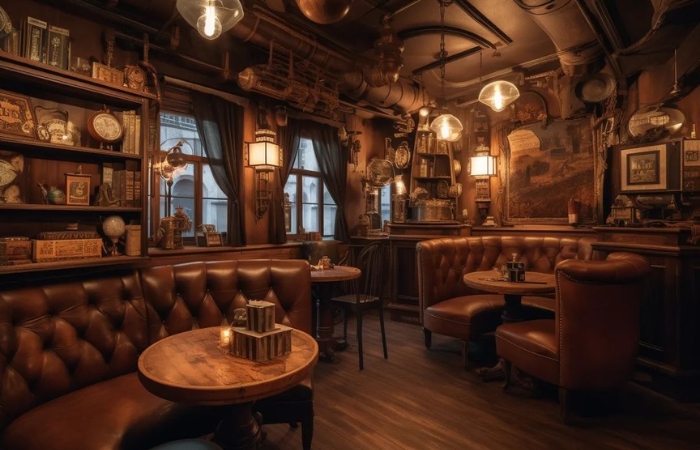
Exploring Cost-Effective Industrial Design Options
Budget considerations often play a significant role in design decisions. Industrial design, with its emphasis on raw materials and minimalist furnishings, can be more cost-effective, as it relies on utilitarian elements. Repurposing old industrial objects or sourcing affordable industrial-inspired furniture can be a budget-friendly approach. On the other hand, Steampunk, with its vintage and antique elements, may involve higher costs for authentic pieces. Consider your budget and explore various options that align with your financial constraints.
Investing in Authentic Steampunk Pieces
If you decide that Steampunk design is your heart’s desire, investing in authentic Steampunk pieces can be a rewarding endeavor. Look for reputable antique shops, vintage markets, or specialized Steampunk retailers to find unique and genuine artifacts that reflect the essence of this captivating style. Each piece with a historical significance can become a cherished focal point in your Steampunk-inspired space.
Frequently Asked Questions
What Is the Main Difference Between Industrial and Steampunk Interior Design?
Industrial interior design is characterized by its raw and rugged aesthetics, often incorporating exposed brick walls, concrete floors, and metal elements. It embraces a utilitarian approach to furnishing, with minimalist furniture and versatile layouts. On the other hand, steampunk interior design draws inspiration from the Victorian era and science fiction, combining vintage and retro elements with futuristic imaginings. Steampunk features distressed finishes, unique textures like weathered wood and leather upholstery, and signature elements such as brass, copper, and gears.
Can I Incorporate Both Styles in My Home?
Yes, you can definitely incorporate elements of both industrial and steampunk designs in your home. The overlapping features of these styles offer an opportunity for creative fusion. Consider using raw materials like exposed brick and metal along with steampunk accessories such as vintage clocks or gear-inspired decorative elements to achieve a balanced and captivating look that marries the two aesthetics.
Which Style Is More Budget-Friendly?
In general, industrial design tends to be more budget-friendly due to its reliance on raw materials and minimalist furnishings. By repurposing old industrial objects or sourcing affordable industrial-inspired furniture, you can create an industrial-themed space without breaking the bank. However, if you wish to incorporate authentic steampunk artifacts and vintage pieces, the cost may be higher. It’s essential to consider your budget and explore cost-effective options that align with your design vision.
How Can I Add Steampunk Elements to My Industrial-Themed Room?
To add steampunk elements to an industrial-themed room, focus on incorporating vintage artifacts and decorative pieces. Look for antique clocks, vintage typewriters, or brass telescopes that evoke the Victorian era’s charm and science fiction spirit. You can also infuse warm colors like rusty oranges and deep browns into your neutral industrial color palette to achieve a more steampunk-inspired atmosphere.
Are There Any Specific Color Schemes Associated with Each Style?
Industrial design often emphasizes a neutral color palette with shades of gray, black, white, and earthy tones. Steampunk, on the other hand, leans towards warmer and richer colors like deep browns, rusty oranges, and antique gold. When merging the two styles, you can harmonize the neutral industrial base with warm steampunk accents to create a visually stimulating and inviting space.
What Type of Lighting Works Best for Steampunk Interiors?
Steampunk interiors typically feature vintage-inspired lighting fixtures with brass and copper finishes. Exposed Edison bulbs and metal pendants, which are characteristic of industrial lighting, can also be seamlessly integrated into steampunk spaces. Combining these distinct lighting elements creates a captivating atmosphere that exudes both nostalgia and innovation.
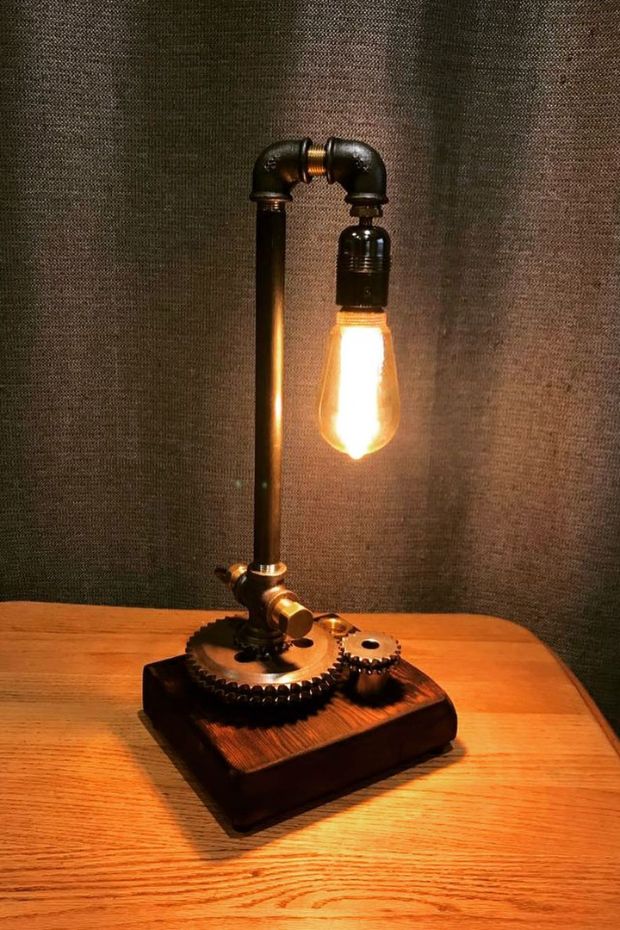
Is It Necessary to Have a Large Space to Achieve an Industrial or Steampunk Look?
No, a large space is not necessary to achieve an industrial or steampunk look. Both styles can be adapted to various room sizes and layouts. Industrial design’s open and versatile layouts can work well in smaller spaces, while steampunk’s attention to detail and imaginative elements can be showcased in any room size. It’s more about creatively utilizing the available space and carefully curating the design elements to achieve the desired aesthetic.
Can I Mix Vintage and Modern Elements in Either Design Style?
Yes, mixing vintage and modern elements is a common approach to both industrial and steampunk design. The combination of old and new adds depth and visual interest to the space. For industrial design, modern furniture and accessories can complement raw materials and exposed brick, creating a balanced and contemporary atmosphere. In steampunk, incorporating modern items with a steampunk twist can infuse innovation and uniqueness into the nostalgic and vintage-inspired space.
How Do I Maintain Industrial Materials Like Exposed Brick and Metal Surfaces?
Industrial materials like exposed brick and metal surfaces are relatively low-maintenance. Regular dusting and occasional cleaning with mild soap and water are usually sufficient to keep them looking their best. For metal surfaces, you may want to apply a protective coating to prevent rusting. Embracing the natural weathered look of these materials can add to the charm of the industrial design, making maintenance less cumbersome.
Conclusion
Interior design is an art that allows us to express our individuality and creativity, shaping spaces that reflect our personalities and passions. Both Industrial and Steampunk styles offer incredible opportunities to create stunning, unique spaces that stand out from the crowd. By mixing, matching, and even blending elements from these styles, you can curate a truly one-of-a-kind interior that resonates with your taste and lifestyle.
As you embark on your interior design journey, remember to consider your personal preferences, architectural context, and budget constraints. Whether you lean towards the rugged and utilitarian Industrial style or embrace the whimsy of Steampunk, the key is to find harmony and balance in your design choices.



